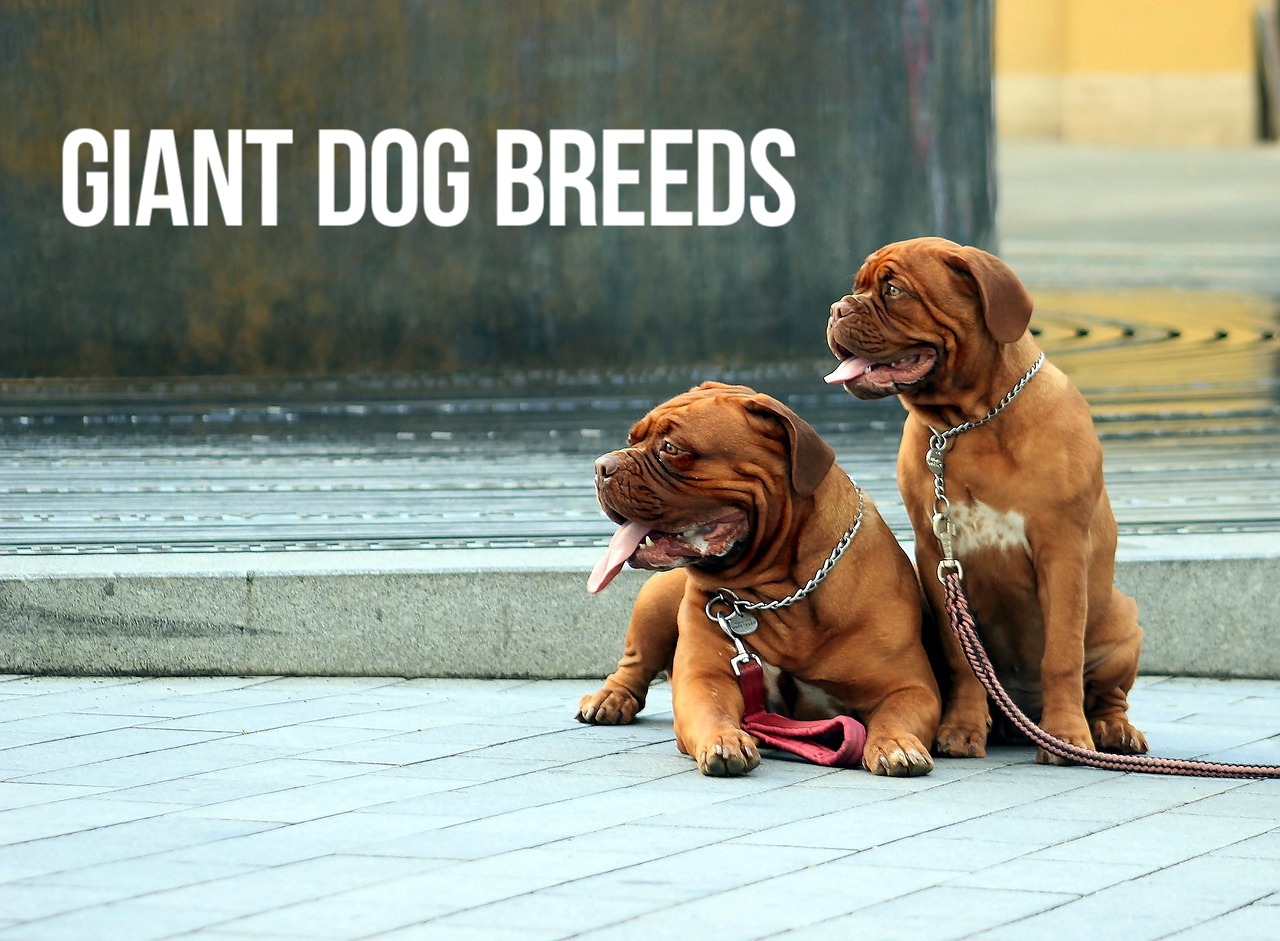Owning a giant dog breeds can be a big responsibility and task. If you’re contemplating welcoming one into your household, here are a few aspects to bear in mind.
Growth and Development
Enormous dogs remain in their puppy phase for an extended period, taking their time to mature both mentally and physically. Young giant dogs are prone to joint injuries, hence the need for careful monitoring during exercise.
Accommodation
With a larger dog comes the need for larger essentials, from toys and bowls to beds. While some giant dogs adapt well to compact living spaces, it’s crucial to ensure there’s enough room for their necessities.
Remember, not all places or people are equipped to accommodate giant dogs. Many flats and hotels impose weight restrictions on dogs, which giant breeds often surpass. Finding experienced and competent dog sitters or walkers can also be a daunting task.
Expense
Caring for a giant dog can be a costly affair. The larger the dog, the heftier the expenses tend to be. Before deciding to bring a giant breed into your home, it’s worth considering your financial flexibility and ability to handle the associated costs.
Products for larger breeds, including food and other supplies, are typically pricier than those for smaller dogs. Furthermore, medication costs for giant dogs are likely to be higher. Regrettably, not all veterinary clinics, particularly those in city areas, are equipped to cater to giant breeds. You might need to explore different options or travel further to find a vet who can provide necessary services like X-rays, surgeries, and more for your giant dog.
Training
Training is essential for all dogs, regardless of their size, but it’s particularly crucial for giant breeds. Actions that might seem “endearing” when performed by small dogs, such as jumping up, counter-surfing, and pulling, can become problematic when your dog is a giant.
Given that these dogs can outweigh many humans when fully grown, it’s vital to start training them while they’re still young puppies. Training should always be enjoyable and positive. If you’re thinking about bringing one of these giants into your life, consider the AKC S.T.A.R. Puppy program to start training on a positive note.
If you’ve considered all these potential hurdles and still believe that when it comes to dogs, the bigger, the better, then one of these breeds might just be the perfect addition to your family.
Table of Contents
The English Mastiff
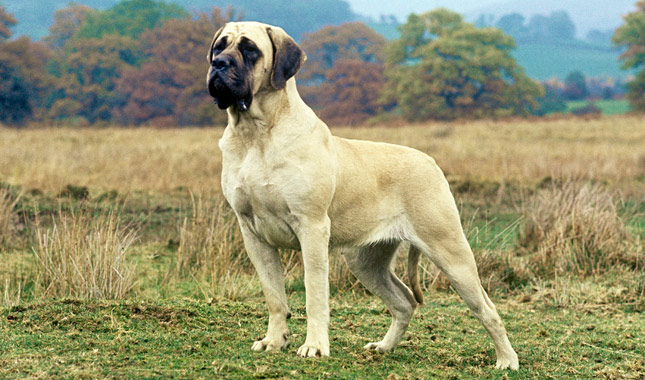
The English Mastiff, a breed of sizable working dog, has been utilised in England for over two millennia as a protector and combatant. This breed’s origins can be traced back to European and Asian records dating as far back as 3000 BCE. Often referred to as the Molossian breeds due to a shared ancestor, many robust, large dog breeds bear the name Mastiff. These breeds, like the imposing Cane Corso, were often used as war dogs or protectors. The Romans, during their invasion of England, used the English Mastiff in the ancient Roman arenas, where they were forced to fight against bears, lions, tigers, bulls, other dogs, and even human gladiators. The breed also participated in the later bullbaiting and bearbaiting rings of England.
The Mastiff, despite its formidable strength, is known for its gentle nature. It possesses a wide head, sagging ears, a broad short snout, and a short coarse coat. The breed standard specifies that the colour should be apricot, silver fawn, or a mix of fawn and black known as brindle. The ears and muzzle are typically dark. The American Kennel Club, which acknowledged the breed in 1885, states that male Mastiffs must be at least 30 inches (76 cm) tall at the shoulder, and females at least 27.5 inches (70 cm). The breed’s weight ranges from 120 to 230 pounds (54 to 104 kg).
The Bullmastiff, a hybrid of the Mastiff and the Bulldog, was bred in 19th-century England. Its primary role was to deter poaching on estates and game preserves, earning it the nickname “gamekeeper’s night-dog.” The Bullmastiff is a tan, reddish-brown, or brindled dog, with black on the face and ears. It stands 24 to 27 inches (61 to 69 cm) tall and weighs between 100 and 130 pounds (45 to 59 kg). It is often used as a police dog and guard due to its protective nature.
The Saint Bernard
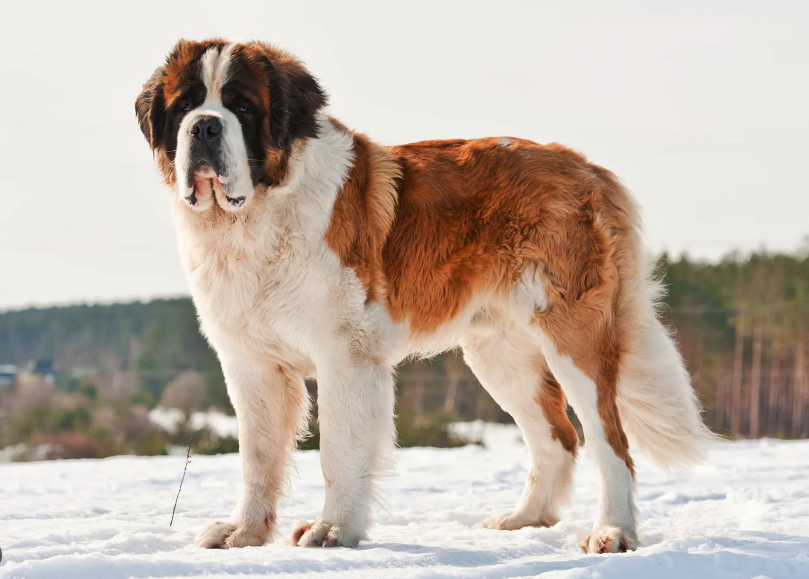
The Saint Bernard, also known as the Saint Bernard dog, is a working breed renowned for its heroic efforts in saving over 2,000 lives during its 300-year tenure as a guide and rescue dog. This service was performed at the hospice established by St. Bernard of Aosta (also known as St. Bernard of Menthon) in the Great St. Bernard Pass, located in the southwestern Pennine Alps. The breed likely descends from mastiff-like dogs brought from Asia to Europe by the ancient Romans. It seems the Saint Bernard was introduced to the hospice in the late 17th century. Among the most celebrated of these hospice dogs was Barry, who is said to have rescued over 40 people before his passing in the early 1800s. Besides their rescue work, Saint Bernards have also been used as cattle, draft, and guard dogs.
The Saint Bernard is a robust, muscular breed with a large head and drooping ears. It stands between 26 to 30 inches (66 to 76 cm) tall at the shoulder and weighs between 120 to 180 pounds (54 to 82 kg). The breed’s coat, which can be either short and dense or medium-long, is typically red-brown and white or brindle and white. The long-haired variant of the Saint Bernard was developed through crossbreeding with the Newfoundland dog in the early 19th century.
The Great Dane
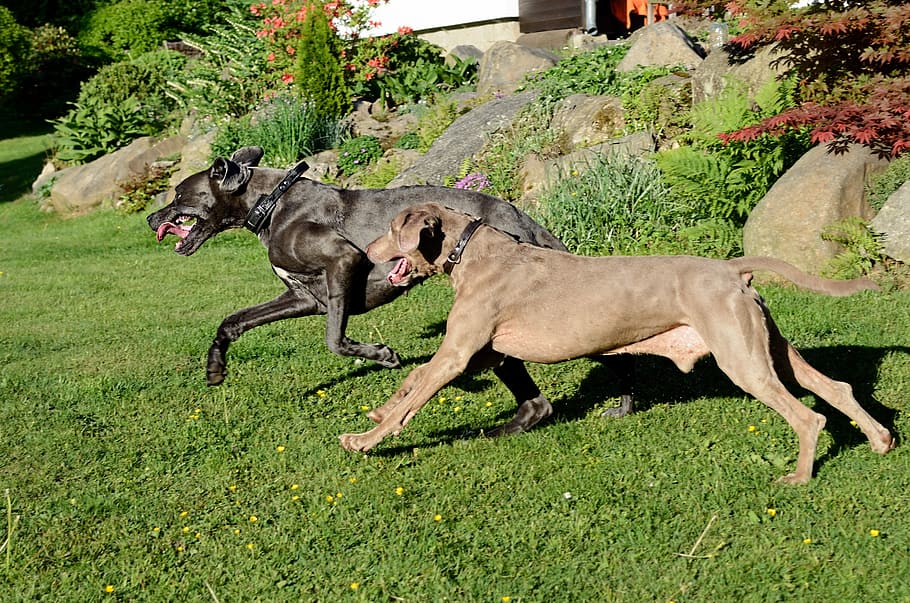
The Great Dane is a breed of working dog that has its roots in Germany, where it was developed over 400 years ago for the purpose of hunting boars. Known for its speed, alertness, bravery, friendliness, and reliability, the Great Dane is a dog of considerable stature. It has a large, square-jawed head and a body structure that lends it a graceful appearance. Its short coat comes in a variety of colours, including black, golden brown (fawn), brindle, blue-grey, harlequin (white with black patches), or mantle (white with a black “blanket” covering the body). The fawn and brindle dogs feature a black mask.
As the tallest among the working breeds, the Great Dane stands between 28 to 32 inches (71 to 81 cm) tall at the shoulder and weighs between 110 to 175 pounds (50 to 79 kg). The breed’s name is somewhat of a misnomer, as it was derived from one of its French names, Grand Danois, which translates to “Big Danish”. However, there’s no known connection between Denmark and the breed’s history or origins. In its native Germany, the breed is referred to as the Deutsche Dogge, or “German Mastiff”.
The Newfoundland
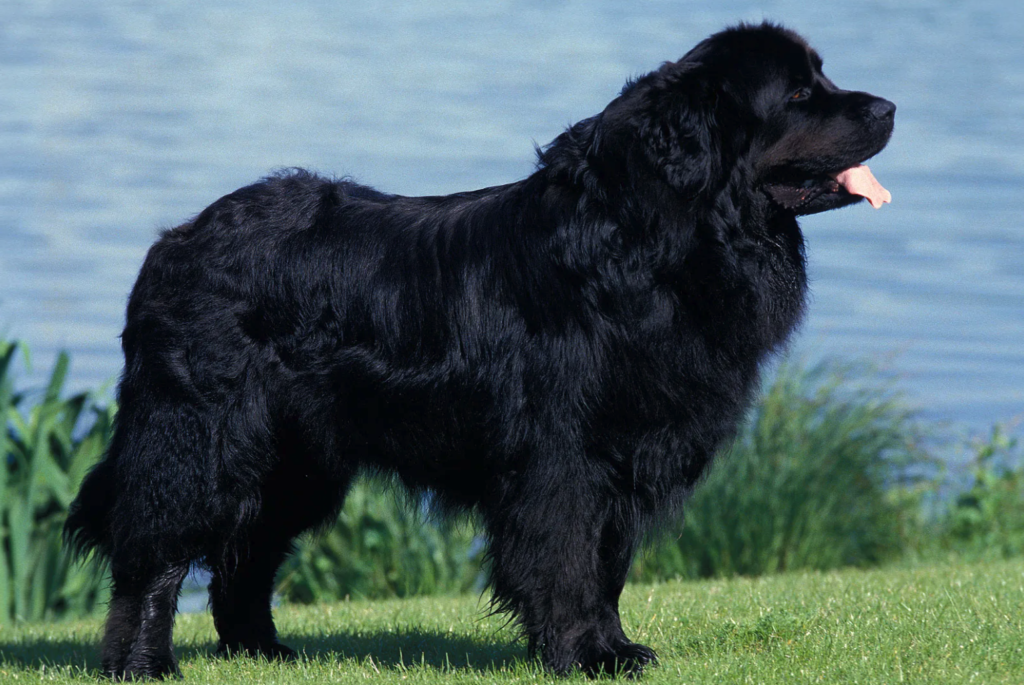
The Newfoundland, also known as the Newfoundland dog, is a breed of working dog that originated on Newfoundland Island. Its development is believed to have resulted from crossbreeding between local dogs and the Great Pyrenees dogs brought to North America by Basque fishermen in the 17th century. The Newfoundland is renowned for its sea rescue capabilities, a testament to its size, gentle nature, and patient temperament.
This colossal breed stands between 26 to 28 inches (66 to 71 cm) tall at the shoulder and weighs between 100 to 150 pounds (45 to 68 kg). Its powerful hindquarters, large lung capacity, webbed feet, and heavy, oily coat all contribute to its exceptional swimming abilities and resilience in cold waters. Beyond its rescue work, the Newfoundland has also been utilised as a watchdog, companion, and draft animal.
The typical Newfoundland dog sports a solid black, brown, or grey coat. However, there’s a variant known as the Landseer Newfoundland, named after Sir Edwin Landseer, the artist who famously painted it. This variant is usually characterised by a black and white coat.
The Newfoundland, a breed known for its amiable and gentle nature, hails from Canada. Its distinguishing features include a large build and a dense, water-resistant coat that enables it to withstand chilly waters. Thanks to their webbed feet, Newfoundlands are exceptional swimmers, possessing the strength to rescue people from drowning.
Their patience and affinity for children make them an excellent choice for families. They are recognised for their calm demeanour and good behaviour. If you can handle a bit of slobber, a Newfoundland could be a fantastic addition to your household.
The Anatolian Shepherd
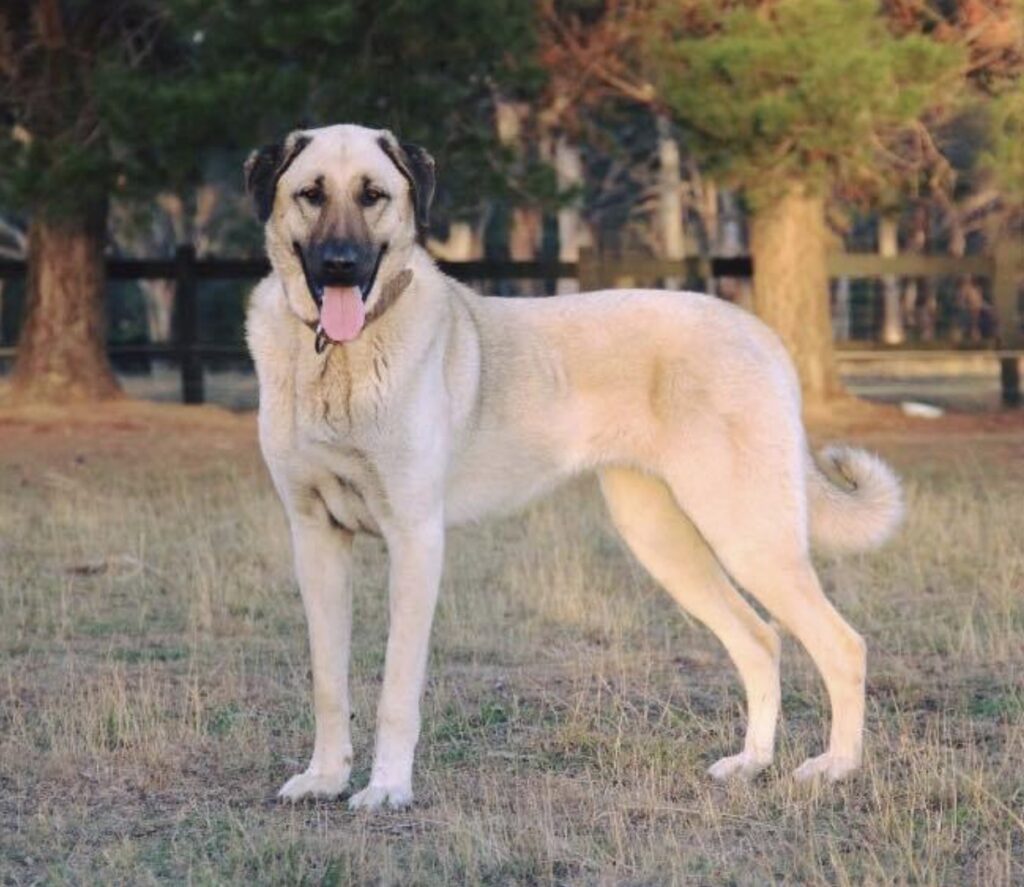
The Anatolian Shepherd is a robust and protective breed that originates from Turkey. This breed is characterised by its solid build and dense coat, which enables it to endure various weather conditions. Renowned for their loyalty and courage, Anatolian Shepherds have been employed for hundreds of years to safeguard livestock from predators.
Their high intelligence and independence make them outstanding guardians. Although they are generally more serious compared to other breeds, they can also display a gentle and affectionate side towards their families.
Black Russian Terrier
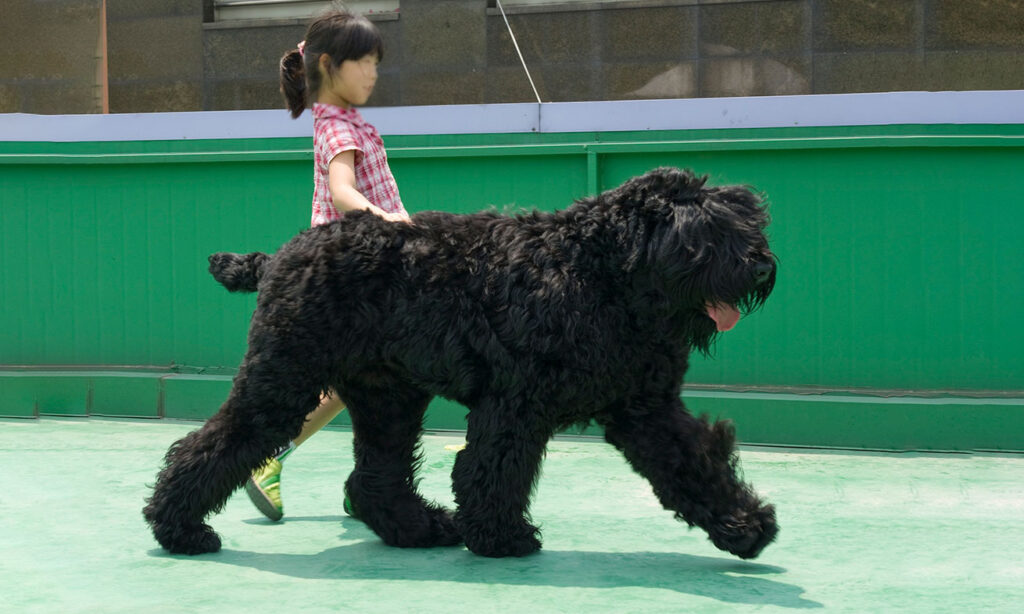
Hailing from Russia, the Black Russian Terrier is a robust and self-assured breed, characterised by a thick, dense coat that typically comes in black or dark grey. Renowned for their loyalty and protective instincts, they make excellent guard dogs. They are intelligent and receptive to training, although they do need consistent direction and socialisation.
Despite their tough exterior, Black Russian Terriers can be gentle and affectionate with their families. To ensure their well-being, it’s important to provide them with regular exercise and mental stimulation.
The Neapolitan Mastiff
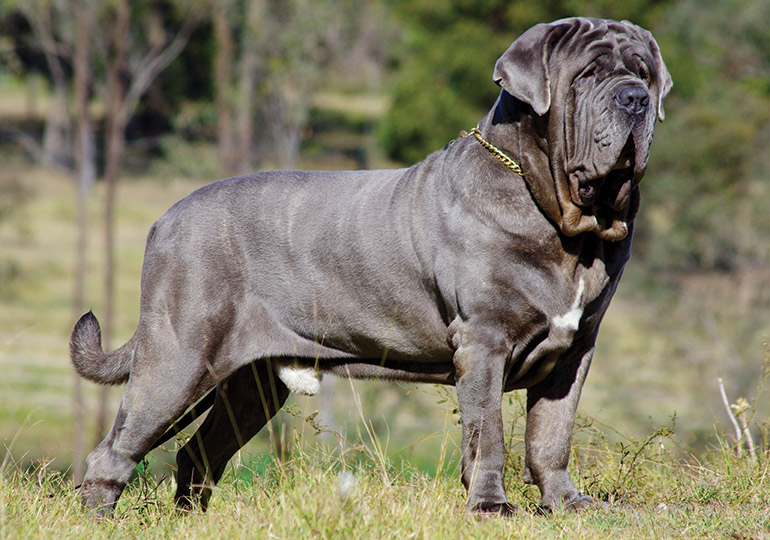
The Neapolitan Mastiff is a distinctive and formidable breed that hails from Italy. Its large size and wrinkled skin give it a unique look that sets it apart. Known for their tranquil and protective demeanour, these dogs make loyal and dedicated companions.
Neapolitan Mastiffs are known to form deep bonds with their families, displaying a sweet and affectionate temperament. They are low-energy dogs, preferring a relaxed and leisurely lifestyle. Most of their time is spent enjoying the comfort of lounging around the house.
The Dogue de Bordeaux

The Dogue de Bordeaux, also referred to as the French Mastiff, is a robust and faithful breed originating from France. They boast a large, muscular physique, characterised by loose, wrinkled skin and a wide head. Known for their serene and gentle disposition, Dogue de Bordeauxs make excellent family pets.
They are protective and dedicated to their families. Despite their formidable appearance, they are typically good-natured and patient, particularly with children.
The Great Pyrenees
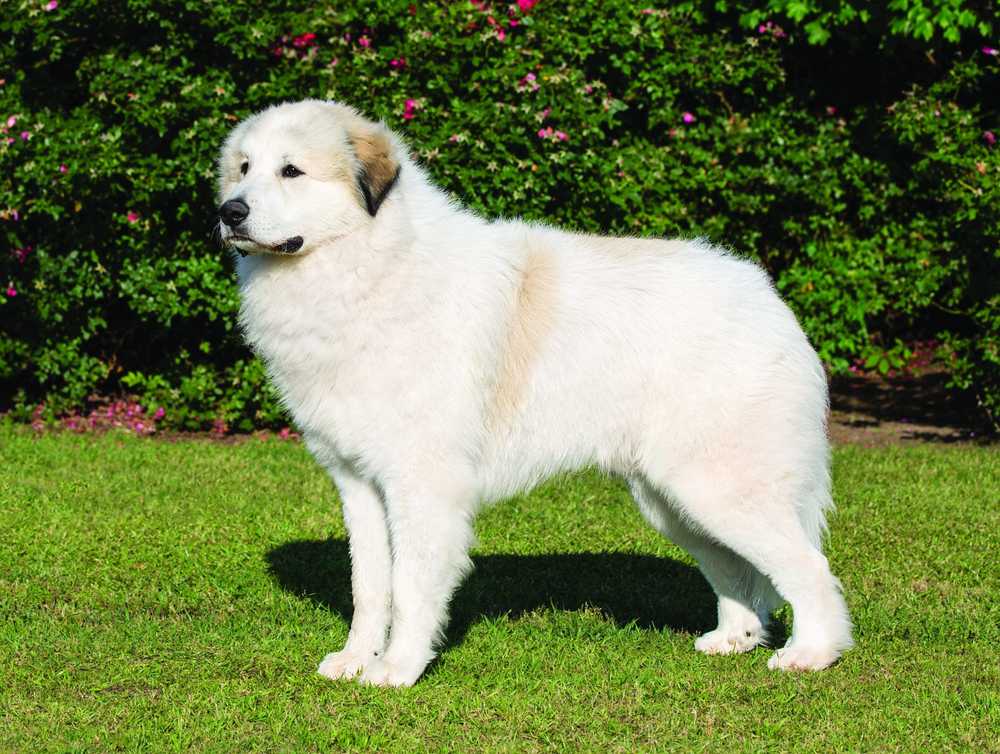
The Great Pyrenees, also known as the Pyrenean Mountain Dog, is a large working breed that likely originated in Asia and made its way to Europe between 1800 and 1000 BC. This breed was a favourite at the French court in the 17th century and was traditionally used in the Pyrenees Mountains to protect sheep from wolves and bears.
Renowned as a guard dog and watchdog, the Great Pyrenees has also been utilised to pull carts and, during World War I, to transport contraband goods between France and Spain. This breed is a large dog with drooping ears and a distinctive rolling walk. Standing between 25 to 32 inches (63.5 to 81 cm) tall and weighing between 90 to 125 pounds (41 to 57 kg), the Great Pyrenees boasts a thick, long coat that is either white or white with grey or brown markings.
The Bernese Mountain Dog
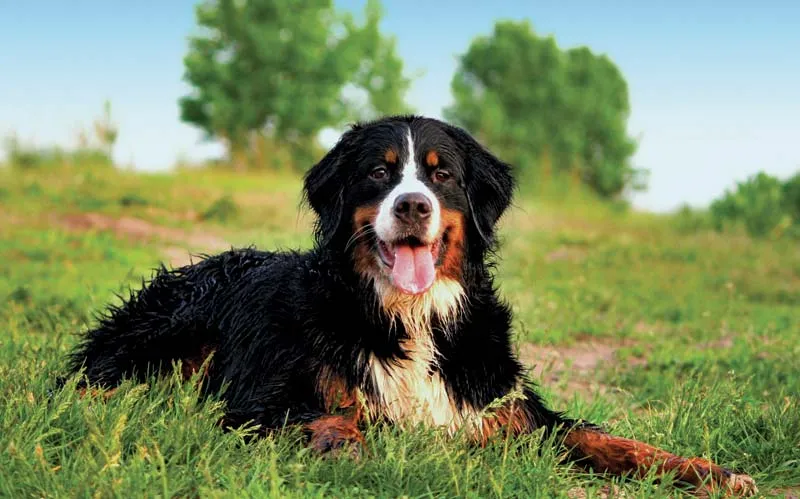
The Bernese Mountain Dog is a breed of Swiss working dog that was brought to Switzerland over 2,000 years ago by the invading Romans. The breed was commonly used for pulling carts, driving cattle to and from their pastures, and protecting farms from predators. Known as Berners, these dogs are recognised for their robustness.
The breed is distinguished by its wide chest, hanging V-shaped ears, and a long, silky, black coat adorned with rust-coloured spots on the chest and forelegs, as well as above the eyes. White markings can be found on the chest, nose, tip of the tail, and occasionally, the feet. The Bernese Mountain Dog stands between 23 to 27.5 inches (58 to 70 cm) tall at the shoulder and ideally weighs about 88 pounds (40 kg). The American Kennel Club first recognised the Bernese Mountain Dog in 1937.
The Irish Wolfhound
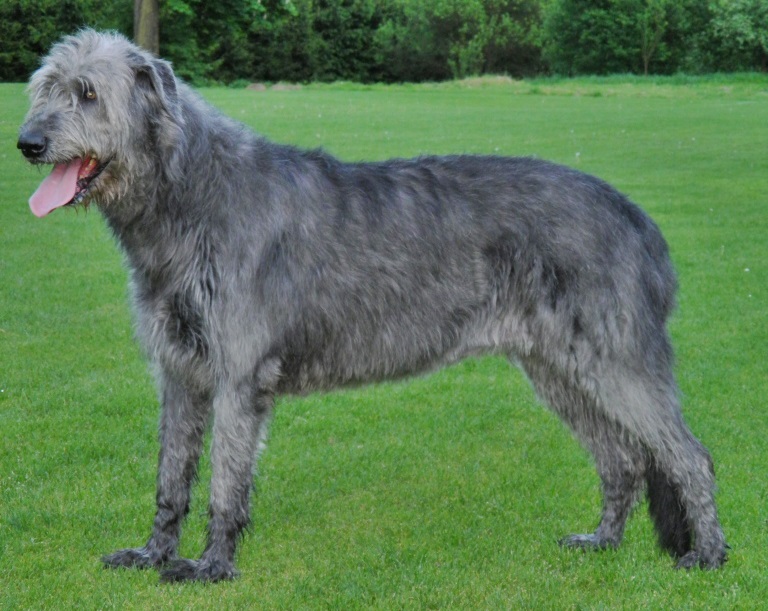
The Irish Wolfhound holds the title of the tallest breed among all dogs. This breed, known for its keen sight, has been used in Ireland for centuries to hunt wolves and other game. An ancient breed, first mentioned around the 2nd century AD, it shares a similar build to the greyhound but is significantly more powerful.
The female, which is smaller than the male, stands at a minimum of 30 inches (76 cm) and weighs at least 105 pounds (48 kg). The male wolfhound, on the other hand, stands at least 32 inches (81 cm) tall and weighs a minimum of 120 pounds (54 kg), although it can often exceed this size. The coat is rough and longer on the brows and underjaw, with colours ranging from grey, brindle, red-brown, black, to white.
The Irish Wolfhound is not only celebrated for its speed, strength, and hunting prowess, but also valued as a gentle and even-tempered companion.
The Scottish Deerhound, a breed known as the “royal dog of Scotland,” has been recognised since the 16th century. It was once owned exclusively by the nobility, who valued it for its prowess in hunting the Scottish stag. Similar in build to the greyhound but larger and with a heavier bone structure, the Scottish Deerhound stands between 28 to 32 inches (71 to 81 cm) tall and weighs between 75 to 110 pounds (34 to 50 kg).
Its coat is rough and wiry, with colours ranging from blue-grey to yellow-brown. Despite being a powerful, swift, and formidable hunter, the Scottish Deerhound is also a loyal and gentle companion.
The Greater Swiss Mountain Dog
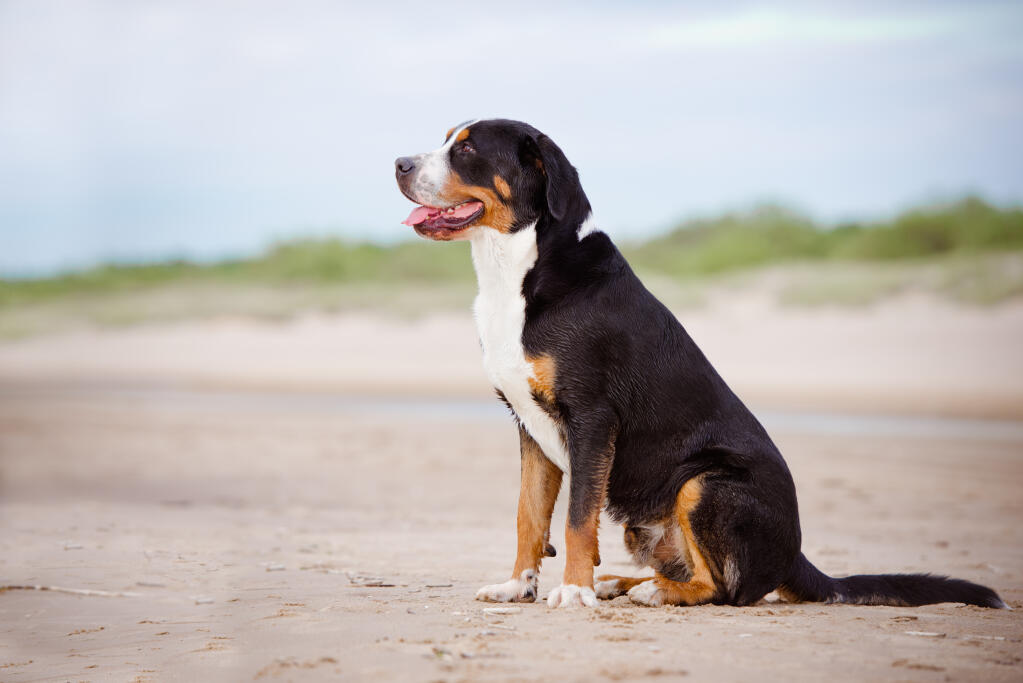
The Greater Swiss Mountain Dog is a large and incredibly robust working breed, renowned for its dense coat adorned with eye-catching black, red, and white markings. Known for their reliability and loyalty, these dogs, affectionately known as Swissies, were traditionally used for herding, pulling loads, and as general farm dogs.
So, what’s in the ‘Greater’? Well, with a height reaching up to 28.5 inches and a weight that can match a medium-sized human, a Greater Swiss Mountain Dog might indeed be ‘greater’ than many. Swissies are incredibly strong, yet agile enough to herd a flock across a mountain’s sloping base. Their coat is a striking tricolour of black, red, and white. The head and muzzle often feature a white marking, known as the “blaze”, which highlights their endearing expression. While many large mountain-dog breeds are described as majestic, Swissies could be said to have practically coined the term.
Conclusion
In conclusion, owning a giant dog breed requires careful consideration and preparation. The growth and development of these colossal canines take time and monitoring to ensure their well-being. Accommodation should be spacious enough to accommodate their size and provide essential amenities. Financial flexibility is crucial as caring for giant dogs can be costly, considering their specific needs and potential veterinary expenses.
Training is particularly important for giant breeds to manage their size and prevent any behavioural issues. Starting training early and using positive methods is key to instilling good behavior and manners. Despite the challenges, giant breeds like the English Mastiff, Bullmastiff, Saint Bernard, Great Dane, Newfoundland, and Anatolian Shepherd offer unique characteristics and qualities that make them beloved companions.
If you’re ready for the responsibility and have considered all the potential hurdles, these gentle giants can bring joy, loyalty, and protection to your family. However, always ensure you’re equipped to provide the necessary care and attention they require. By understanding the considerations and characteristics of giant dog breeds, you can make an informed decision and find the perfect addition to your household.

